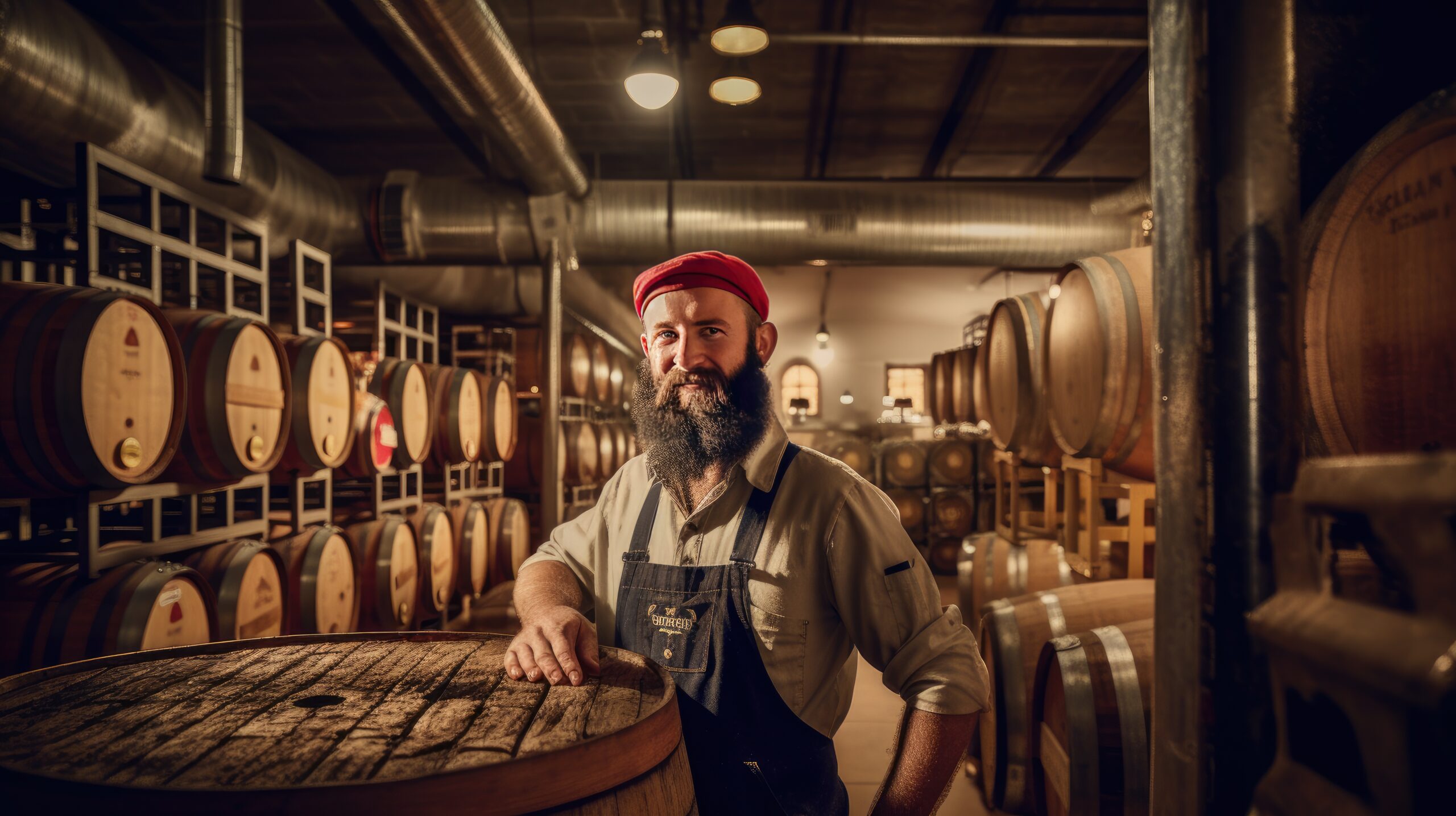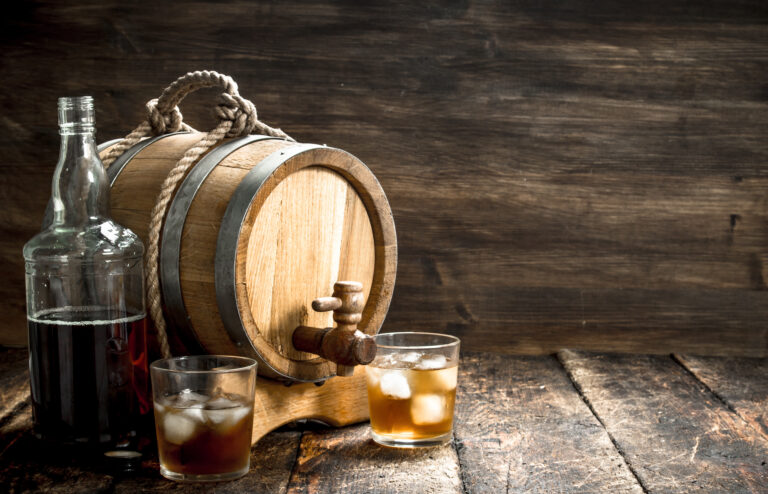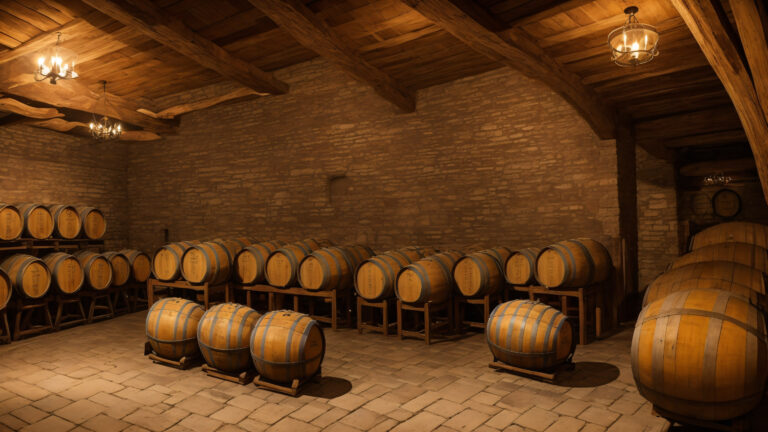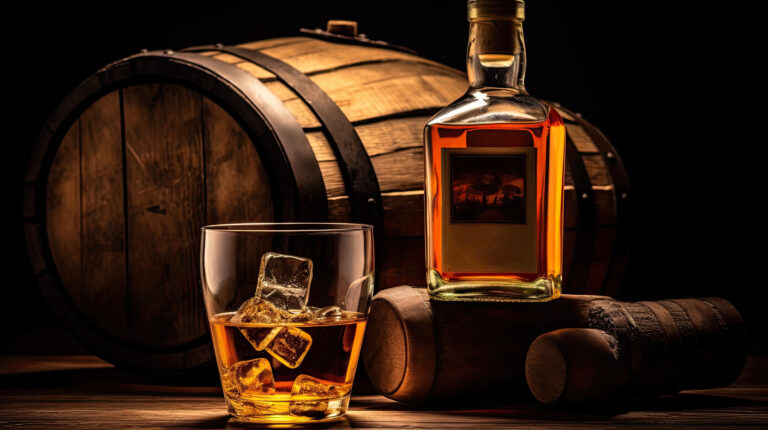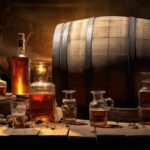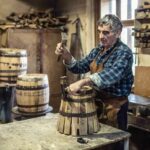Who wants to wait around for good whiskey? Seriously, the traditional barrel-aging process, while classic, demands serious patience—we’re talking three years or more to get those rich, complex flavors everyone craves. But what if I told you there are some clever, innovative ways to accelerate whiskey aging without cutting corners on quality? Let’s dive into how distillers are doing just that.
The OG Way: Traditional Whiskey Aging
Alright, first things first, let’s talk about how whiskey has been aged for centuries. It’s all about stashing that freshly distilled spirit in charred oak barrels. As the whiskey chills out in there, it soaks up flavors from the wood and gets a good dose of oxygen. This whole whiskey maturation journey typically takes at least two years for popular styles like Bourbon or Scotch, but it can stretch out for decades, leading to incredible aged whiskey profiles.
1. Picking the Perfect Barrel
The barrel isn’t just a container; it’s a key player in the flavor game. Whether it previously held wine, sherry, or bourbon, its history matters. And don’t forget the char level! That’s how much the inside of the barrel was toasted or burned before the whiskey went in. More char means more flavor compounds from the wood get infused into your spirit. This contributes heavily to the oak influence and flavor extraction during aging.
2. Warehouse Vibes
Think of a whiskey warehouse as a living, breathing entity. Its location, temperature, and humidity are all crucial. Whiskey ages faster in warmer spots, while cooler areas slow things down. More humidity? That means the whiskey absorbs those rich oak flavors quicker. Many distillers strategically use different warehouse conditions to create a diverse range of flavors in their barrel-aged spirits.
3. The “Angel’s Share”
Ever heard of the “angel’s share”? It’s the roughly 2% of whiskey that evaporates from the barrel each year. While it might seem like a loss, this evaporation actually concentrates the remaining whiskey’s flavor and aroma compounds. The longer a whiskey ages, the more pronounced and intense these concentrated flavors become.
4. Blending for Perfection
For many top whiskey styles, distillers meticulously blend whiskey barrels of different ages. This creates a beautifully balanced and complex flavor profile. Older whiskeys bring richness and depth, while younger ones add lively, vibrant notes. Nailing the right combination is the secret to producing a truly premium, signature product with an ideal flavor profile.
Why Speed Things Up? The Rise of Accelerated Whiskey Aging
So, why bother with artificial aging techniques when traditional methods exist? Simple: time is money, and traditional aging takes a long time—often three years or more for most varieties. These accelerated methods can churn out a quality product in a fraction of the time, addressing the demand for rapid whiskey maturation.
Heat Cycling: The Warm-Up Act
Heat cycling is a popular method. Barrels are stored in a temperature-controlled chamber, then rapidly heated and cooled. This temperature fluctuation makes the whiskey interact with the wood faster, speeding up the aging process. Using this technique, a whiskey can achieve up to four years of traditional barrel aging in just 6-12 months. It’s all about increasing the wood-whiskey interaction.
Ultrasonic Aging: Good Vibrations
Ultrasonic aging uses ultrasonic waves to create high and low pressure zones inside the barrel, effectively forcing the whiskey in and out of the wood. This boosts wood contact and speeds up flavor extraction. Some distilleries have found that this method can produce a 3-year-old whiskey in under three months, making it a leader in rapid aging technology.
Barrel Inserts and Staves: More Wood, More Flavor
Think of barrel inserts and staves as superchargers for your barrel. These wooden slats are added directly to barrels to significantly increase the surface area for the whiskey to interact with. More wood contact means faster aging. Distilleries have seen their aging rates double by incorporating these inserts, leading to more efficient oak contact and flavor development.
Micro Barrels: Small But Mighty
Using smaller whiskey barrels (like 5- to 20-liter instead of the standard 200-liter) is a game-changer for speed. Why? Because of the increased wood-to-whiskey ratio. In a smaller barrel, more of the whiskey is in direct contact with the wood, so it absorbs flavors and colors at an accelerated pace. Some distillers have achieved the equivalent of 6-8 years of barrel aging in just 12-24 months using these small powerhouses, leveraging increased surface area aging.
Clearly, for the impatient whiskey lover or a distillery needing to get product to market, these techniques offer a compelling shortcut to a tasty, well-rounded flavor. But for some purists, nothing beats the slow, time-honored tradition. Ultimately, it boils down to personal taste and how much patience you’ve got!
Smaller Barrels for Seriously Fast Aging
If you’re looking to significantly speed up the aging process, many distillers are turning to smaller barrels. It’s simple geometry: the smaller the barrel, the more surface area the whiskey has in contact with the wood. This means a faster transfer of those desirable flavor compounds.
Swapping out standard 53-gallon barrels for 5- to 15-gallon barrels can slash aging time from years down to mere months. The wood-to-whiskey ratio is dramatically higher in these smaller vessels, which seriously accelerates whiskey maturation.
Small barrels also lead to faster oxidation and evaporation. As the whiskey breathes in oxygen and water evaporates, its flavor becomes more concentrated. This also helps the whiskey pick up color from the charred oak much quicker.
However, there’s a catch: more wood contact means the whiskey can become over-oaked if left for too long. It demands close monitoring to avoid an unpleasantly bitter, tannic taste. For most small barrel aging, three to six months might be the sweet spot.
An alternative is to use barrel inserts or staves, which provide more wood surface area within a standard barrel. The beauty of inserts is you can remove them once the desired aging is achieved, preventing that unwanted over-oaking.
Both smaller barrels and barrel inserts are popular techniques for creating an aged whiskey in less time. But like any shortcut, they require careful attention to detail. When done right, these methods can produce a remarkably drinkable whiskey in just a few months that rivals the flavor of one aged for years. A little experimentation might be needed to find what truly works for your palate!
Agitating the Whiskey for Enhanced Wood Contact
Think of it like stirring your coffee to get the sugar to dissolve faster. Agitating the whiskey while it’s aging in barrels significantly increases the surface contact between the spirit and the wood, thereby speeding up the whiskey aging process. Distillers employ a few gentle techniques to achieve this:
Rolling the Barrels
Gently rolling barrels from side to side, or end over end, helps slosh the whiskey around, exposing more of its surface area to the wood. As the barrel rolls, the whiskey splashes and churns, thoroughly saturating the entire inner surface of the barrel. Many distillers roll barrels at regular intervals, say every few months. This simple technique can shave years off the total maturation time.
Heating and Cooling Cycles
Subjecting barrels to alternating periods of heating and cooling causes the whiskey to expand and contract, effectively drawing it in and out of the wood. During heating, the whiskey expands, absorbing flavors and colors from the wood. When it cools, the whiskey contracts, pulling even more compounds from the wood. Repeating this temperature cycling process over weeks or months can intensely accelerate the effects of aging, promoting greater wood interaction.
Ultrasonic Agitation
Some distillers are leveraging ultrasonic equipment to vibrate barrels at a high frequency. This ultrasonic agitation stirs the whiskey on a microscopic level, creating a multitude of tiny bubbles and dramatically increasing surface area exposure to the wood. Short bursts of ultrasonic agitation at regular intervals can swiftly accelerate whiskey maturation. The vibrations create a churning effect, like rapidly stirring the whiskey, and the bubbles increase surface area for both absorption and evaporation.
Barrel Rotators
For larger operations, mechanical barrel rotators slowly spin barrels along their long axis. As the barrels steadily rotate day after day, the whiskey is in constant motion, splashing and rolling inside. This continuous rotation, combined with the gradual change in the barrel’s orientation, maximizes the interaction between the spirit and the wood, significantly speeding up the aging process.
By employing these techniques, distillers can produce aged spirits in a fraction of the usual time. However, patience still plays a vital role; true whiskey maturity requires years of careful craft. These artificial aging techniques merely enhance and accelerate the natural processes that give aged spirits their distinctive character.
Heating the Barrels to Fire Up Chemical Reactions
Want to really put the pedal to the metal on aging? Heating the barrels is one of the most effective ways to accelerate whiskey aging. Heat significantly speeds up the natural chemical reactions that happen between the whiskey and the wood. Many distillers use this technique to create complex flavors in their rapid-aged whiskey in less time.
The Heat Cycling Process
Some distillers are all about the heat cycling process, which cleverly alternates between heating and cooling periods. They start by heating the barrels to higher temperatures, around 130-140°F, for a set duration. Then, they cool the barrels back down to room temperature. Repeating this heat/cool cycle several times makes the whiskey absorb more flavor compounds from the wood in a shorter period. The heat literally opens up the wood pores, allowing the whiskey to penetrate deeper into the staves. And those cooling periods? They cause the whiskey to contract, pulling even more flavor out of the wood. This process is key for accelerated maturation.
Controlled Temperature Rack Houses
Other distillers opt for rack houses with tightly controlled temperatures. They keep the environment slightly warmer than normal, typically around 95-115°F. This elevated heat acts as a catalyst, accelerating the chemical reactions between the whiskey and the wood. This allows the distiller to age the whiskey for a shorter period to achieve the desired wood-infused flavors. However, they have to be incredibly careful not to overheat the whiskey, which can lead to undesirable flavor changes. Tight temperature control and constant monitoring are absolutely critical for successful temperature-controlled aging.
Infrared Heating Elements
A few forward-thinking distillers are even experimenting with infrared heating elements placed inside the barrels. Infrared light generates heat without warming the air, allowing the light to penetrate deep into the wood, speeding up the interaction between wood and whiskey. Distillers can carefully control and monitor the intensity and duration of infrared exposure to achieve optimal results. While this is an expensive, high-tech approach, some worry it might alter the natural aging process too much for traditional whiskey connoisseurs.
Ultimately, heat can be incredibly useful for accelerating whiskey aging and imparting rich, wood-infused flavors in less time. But like most good things, moderation is key. Excessive heating can be detrimental and create an artificial taste. A balanced approach combining traditional aging principles with judicious heating might just yield the best results for truly aged spirits.
Adding Wood Chips or Staves to Boost Flavor
Want to seriously ramp up the oak flavor and speed up the whiskey aging process? Adding wood chips, staves, or planks directly to the aging barrels is a popular and effective technique. It’s all about increasing that precious surface area.
Wood Chips: Tiny Flavor Bombs
Wood chips offer an incredible amount of surface area for the whiskey to interact with. Their small size means more pores and edges, allowing for faster extraction of wood compounds like vanillin, which provides those lovely flavor and aroma notes. You can toss wood chips directly into the barrel, sometimes secured in a mesh bag or sachet. Start with just a few ounces and sample the whiskey regularly to avoid over-oaking. Once you hit that sweet spot of desired flavor, simply replace or remove the chips. This method excels at rapid flavor extraction.
Barrel Staves: The Inside Scoop
Barrel staves, essentially the wooden planks that make up a barrel, can also be added to accelerate aging. For the best results, use staves from the same type of oak as your original barrels. These provide significantly more surface area than the whole barrels alone. Secure 2-3 staves upright in the barrel. The increased wood contact will undoubtedly speed up the aging process. Again, be incredibly careful not to over-age; frequent sampling is your best friend here.
Barrel Planks: Maximum Impact
For an even more aggressive aging boost, barrel planks provide maximum surface area. Use planks cut from barrels of the same oak, toast, and char level as your aging barrel. Start with just one plank, and meticulously sample the whiskey regularly to prevent over-oaking. You can add additional planks, but proceed slowly and cautiously. This increased wood exposure means the aging process can accelerate incredibly quickly.
Using these techniques can slash aging time significantly, often cutting it in half. But remember, go slowly and sample frequently! Wood flavor compounds extract quickly from these added wood sources, so you need to monitor the process closely to avoid over-aging your whiskey. By strategically adding wood and tasting regularly, you can create a perfectly aged whiskey with rich wood notes in far less time. It’s a fantastic way to enhance oak character quickly.
Ultrasonic Waves to Mimic the Barrel’s Magic
Ultrasonic aging is a fascinating technique that uses high-frequency sound waves to dramatically speed up the whiskey aging process.
Traditional barrel aging relies on years of slow interaction between the whiskey and the wood. Ultrasonic aging, however, can mimic this intricate process in just a matter of days. These sound waves create high-speed pressure changes in the liquid, which generate tiny vapor bubbles that quickly collapse—a phenomenon known as cavitation. This acoustic cavitation helps accelerate the complex aging reactions that normally take place over long periods.
To implement ultrasonic aging, the distilled spirit is typically placed in a stainless steel container along with some oak barrel staves or oak chips. The container is then subjected to ultrasonic waves for a specific duration. Many micro-distilleries start with just 1 to 3 days of treatment, then taste the whiskey to determine if more time is needed. The results can be astounding, producing a whiskey that tastes like it’s been barrel-aged for 3 to 5 years in a mere few days! For replicating the taste of a whiskey that has been barrel-aged for 10 to 15 years, longer treatments of 5 to 7 days are often required.
Ultrasonic aging offers an affordable method for new distilleries to quickly get aged whiskeys to market while their traditional barrel-aged stocks mature. While some critics argue that ultrasonically aged whiskey might lack the depth of flavor that comes from true traditional barrel aging, when done properly with high-quality oak and the right ultrasonic equipment, it can yield very good results. It’s a viable shortcut for rapid whiskey production.
Many micro-distilleries in the US are now, at least in part, using ultrasonic aging to produce some of their aged whiskey products. As the technique refines, it may become a standard tool to accelerate the production of aged whiskeys. For now, it remains a controversial method, with traditionalists preferring the time-honored practice of barrel aging. But for innovative craft distillers, ultrasonic aging offers an exciting new path to explore in the quest to make great-tasting aged whiskey and achieve accelerated flavor development.
Applying Pressure to Infuse Whiskey into Wood
To really kick the whiskey aging process into high gear, some distillers are using a technique called pressure aging. This method involves applying pressure to physically force the spirit deeper into the wood, accelerating the vital interaction between the whiskey and the barrel.
How Pressure Aging Works
Pressure aging operates by using pumps to increase the pressure around the barrel. This elevated pressure compels the whiskey to penetrate the wood more deeply and rapidly. Under normal atmospheric conditions, whiskey soaks into the barrel at a gradual pace. However, under pressure, the whiskey is effectively forced into the wood fibers and capillaries, exposing more of the liquid to the barrel’s inner surface area.
The result? The whiskey picks up color and flavor compounds at an incredibly accelerated rate. The pressure also encourages some of the volatile compounds naturally present in the wood to dissolve into the whiskey more quickly. The pressure is meticulously controlled and monitored to prevent over-aging and the loss of crucial aromatic compounds, ensuring optimal flavor absorption.
Many distillers view pressure aging as a powerful way to produce a quality, aged product in significantly less time. The time savings can be substantial, often up to 50-70% faster than traditional barrel aging. This technique also provides the distiller with more control and consistency over the aging process. However, some argue that pressure-aged whiskey might lack some of the smoothness and complexity that typically develops over longer, traditional aging periods.
Beyond pressure aging, here are some other techniques distillers use for accelerated whiskey maturation:
- Heating the barrels to increase chemical reactions (think temperature cycling).
- Using smaller barrels with a higher surface area to volume ratio, boosting wood contact.
- Agitating or rotating the barrels to maximize exposure to wood.
- Using wood alternatives like oak chips, staves, or wood spirals directly in the barrel.
- Blending aged and unaged whiskey to create a more mature flavor profile.
While no single method can entirely replicate the natural aging process, these techniques can certainly produce a high-quality aged whiskey in a much shorter timeframe. The results might not have the profound depth of a 15-year or 20-year aged spirit, but they can still deliver an enjoyable, wood-infused flavor for those who aren’t keen on waiting.
Artificial Aging Methods: Weighing the Pros and Cons
In the whiskey world, artificial aging techniques like ultrasound, irradiation, and hyper-oxygenation are definitely hot topics. While some see them as brilliant ways to speed up an otherwise lengthy maturation process, others strongly argue that they simply cannot replicate the complex flavor compounds created through traditional aging. It’s a classic debate between innovation and tradition in whiskey production.
Ultrasound: The Sound of Speed?
Ultrasound uses high-frequency sound waves to create bubbles in the whiskey that rapidly expand and collapse—that’s cavitation at work. This process is said to accelerate chemical reactions that normally take years. However, skeptics are quick to point out that ultrasound might not effectively impart the nuanced oak flavors that truly come from barrel aging, and some even worry it could damage the whiskey’s delicate aroma compounds.
Irradiation: A Radiant Shortcut?
Bombarding whiskey with gamma rays or X-rays is touted to accelerate the breakdown of lignin and cellulose in the wood, releasing tannins and lignin-derived compounds into the spirit. Supporters claim it can age whiskey in just a few days. Detractors, however, counter that irradiation leaves the whiskey with an unnatural taste and simply cannot replicate the subtle, layered flavors of genuine barrel aging.
Hyper-oxygenation: Too Much of a Good Thing?
Bubbling oxygen through the whiskey at high pressure supposedly mimics over 10 years of barrel aging in a matter of days. While oxygen does play a crucial role in traditional aging (oak oxidation is key!), most experts feel that hyper-oxygenation is far too aggressive and can impart unpleasant metallic and chemical flavors. Real barrel aging happens through a slow, controlled interaction with oxygen, not a forced infusion. It’s about careful flavor development, not a quick blast.
The Verdict: Patience vs. Progress
For most whiskey connoisseurs, artificial aging techniques just can’t deliver the depth of flavor, aroma, and character that results from the complex, time-honored process of maturing whiskey in charred oak barrels. While technology can certainly speed things up, it often does so at the expense of true quality and cherished tradition. In the end, genuinely good whiskey demands patience, not just science, to reach its full potential. For many, artificially aged whiskey will never quite match the real thing.
Final Thoughts on Whiskey Maturation
So there you have it: a fascinating look into how whiskey distillers are experimenting with speeding up the maturation process. While aging whiskey the old-fashioned way will likely always remain an art form and often produce the finest results, these artificial aging techniques could certainly allow for more variety and flexibility in the market.
As with many innovations, some whiskey traditionalists will probably turn their noses up at these “shortcuts.” But embracing an open mind can lead to exciting new discoveries! The next time you sip an aged whiskey, whether it’s naturally or artificially matured, take a moment to appreciate the incredible care, craft, and creativity that went into producing such a complex and flavorful spirit. And if you’re feeling adventurous, why not try a bottle from a distiller who’s pushing the boundaries of tradition? You just might find your new favorite rapidly aged whiskey!
What are your thoughts on these innovative aging techniques? Are you a purist, or are you open to trying whiskey aged through these accelerated methods?
